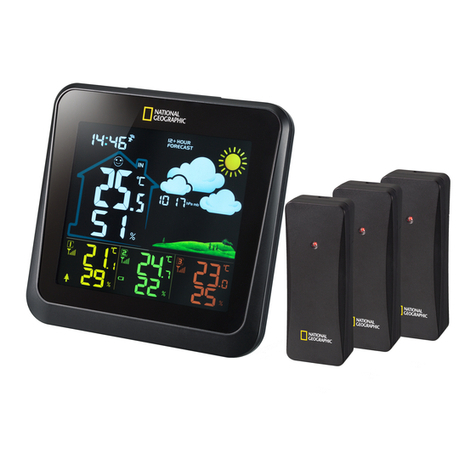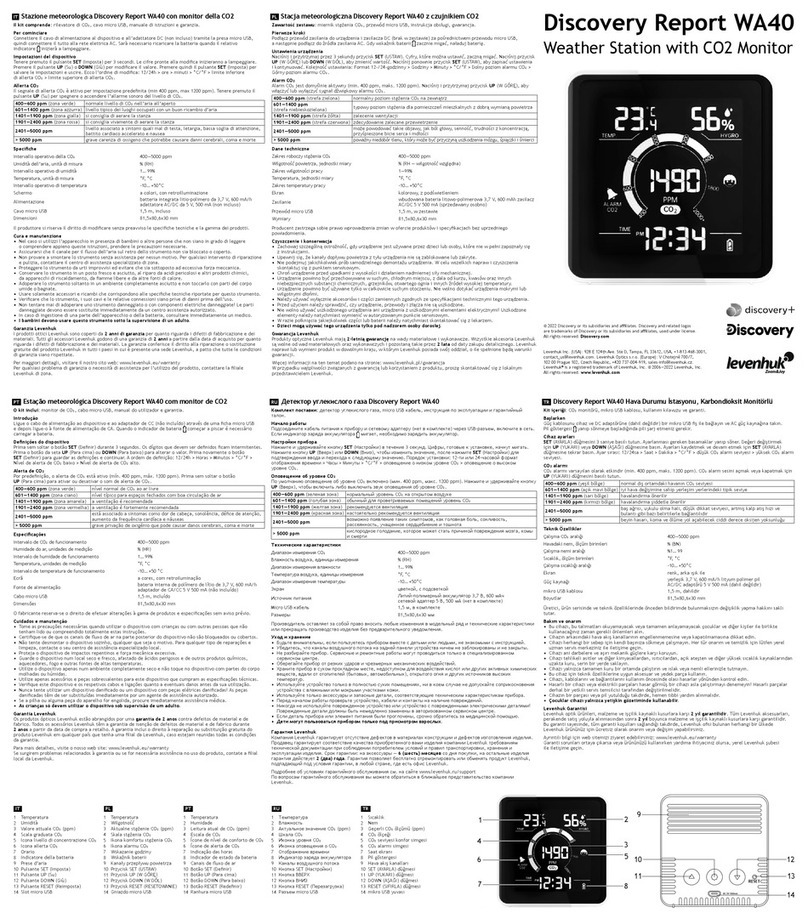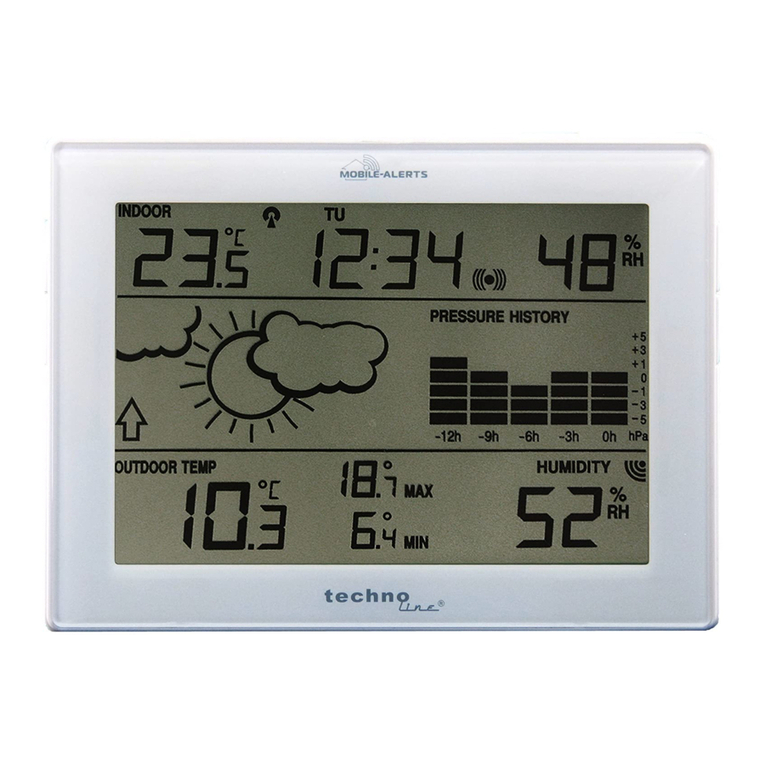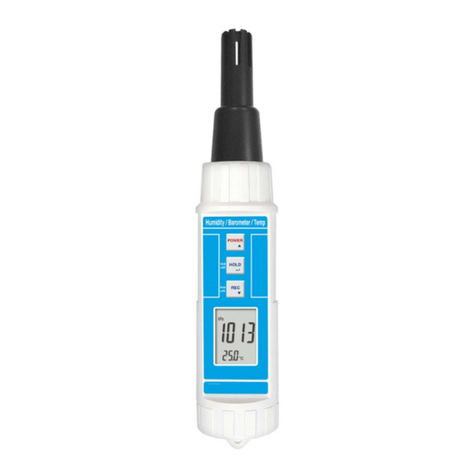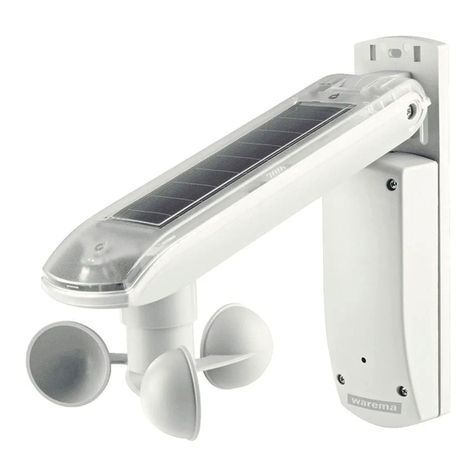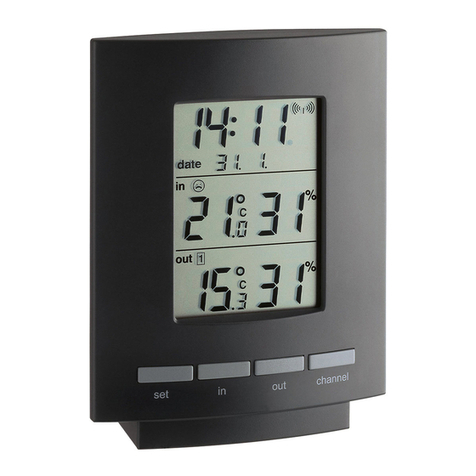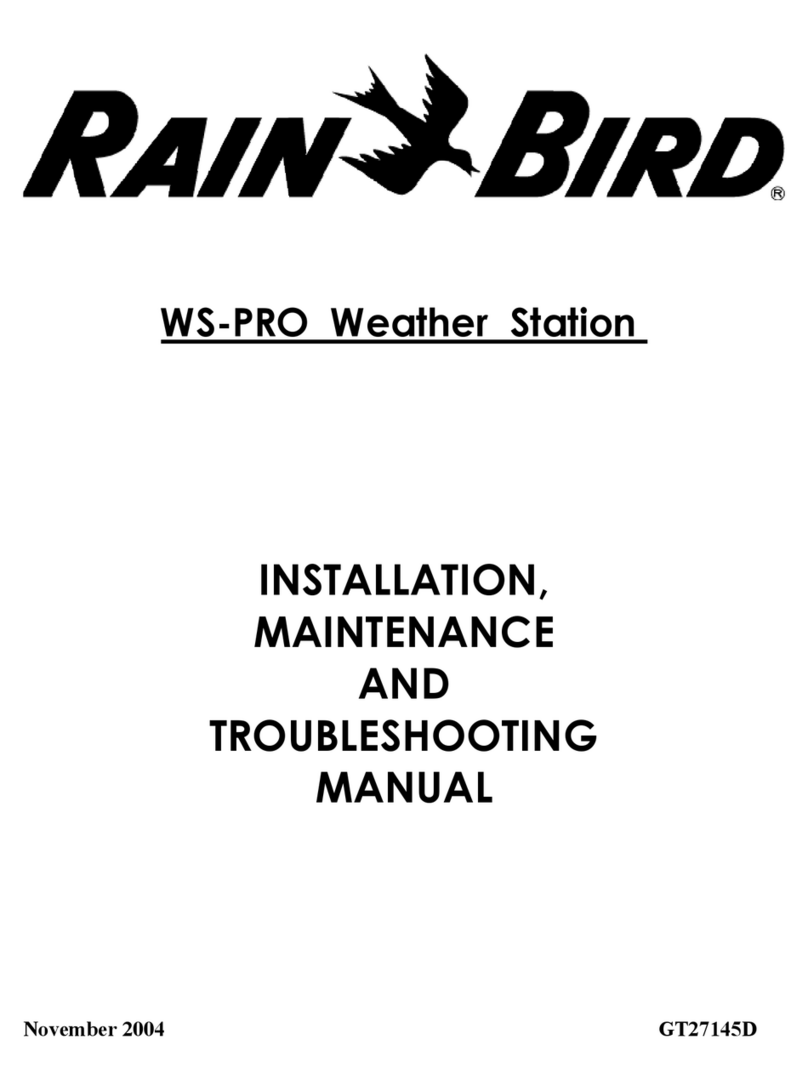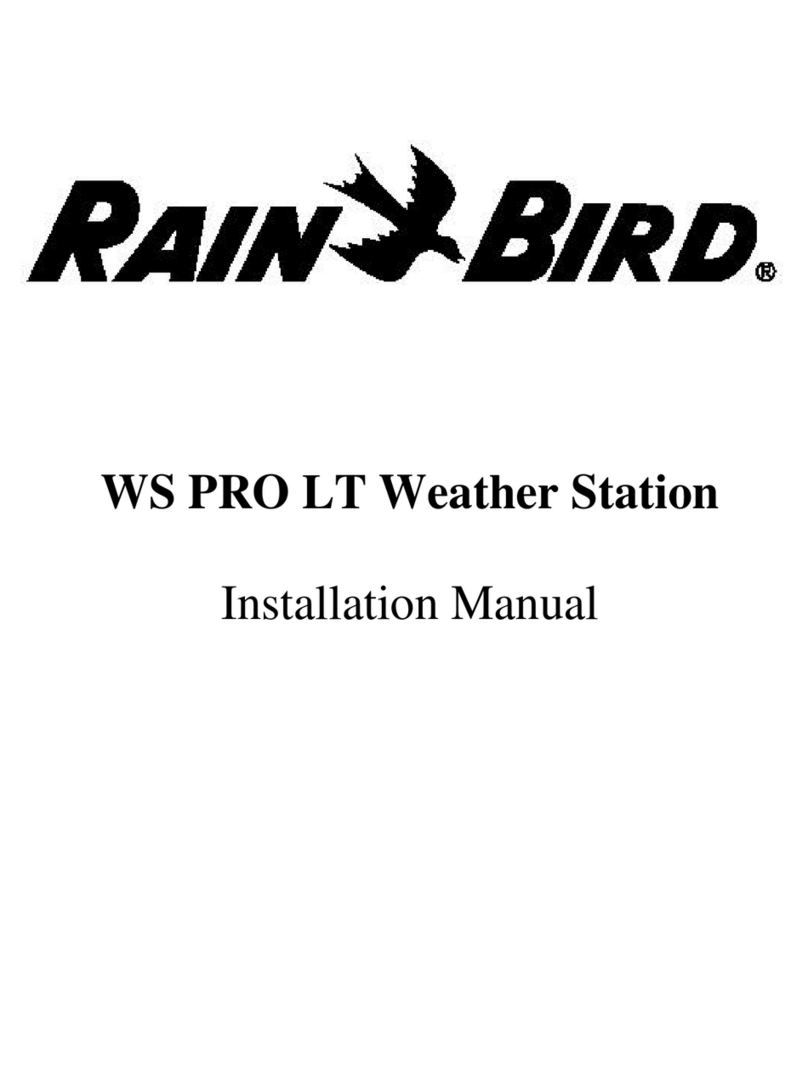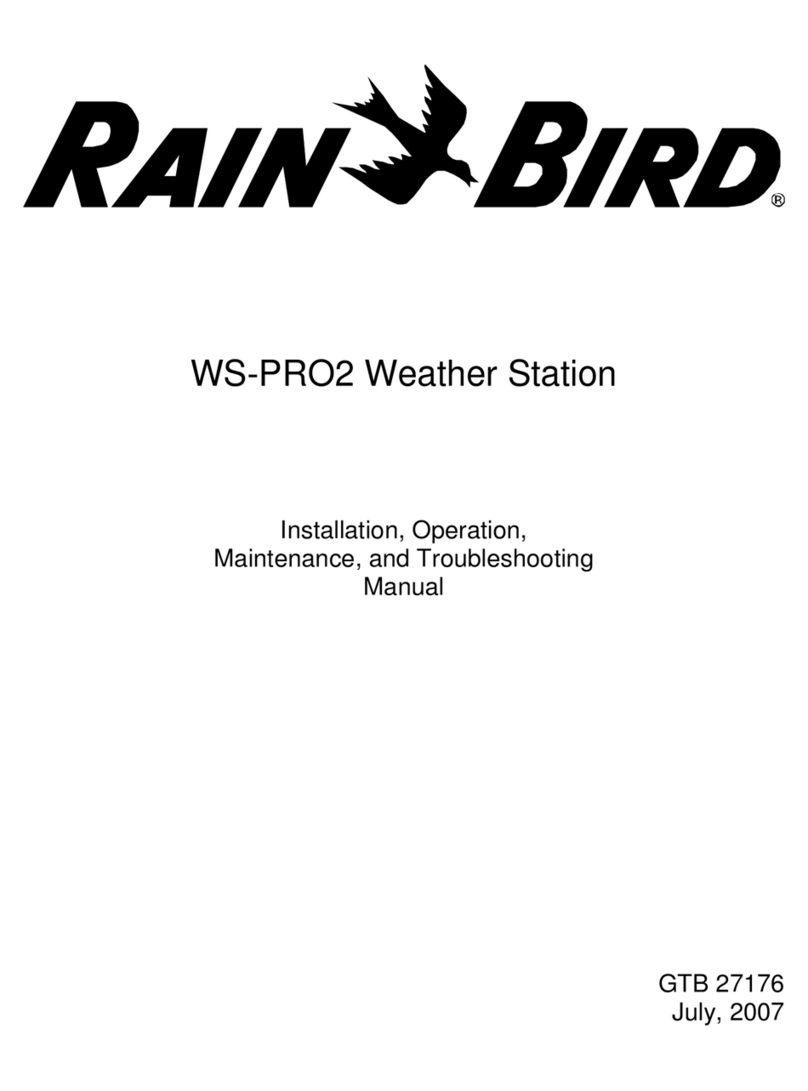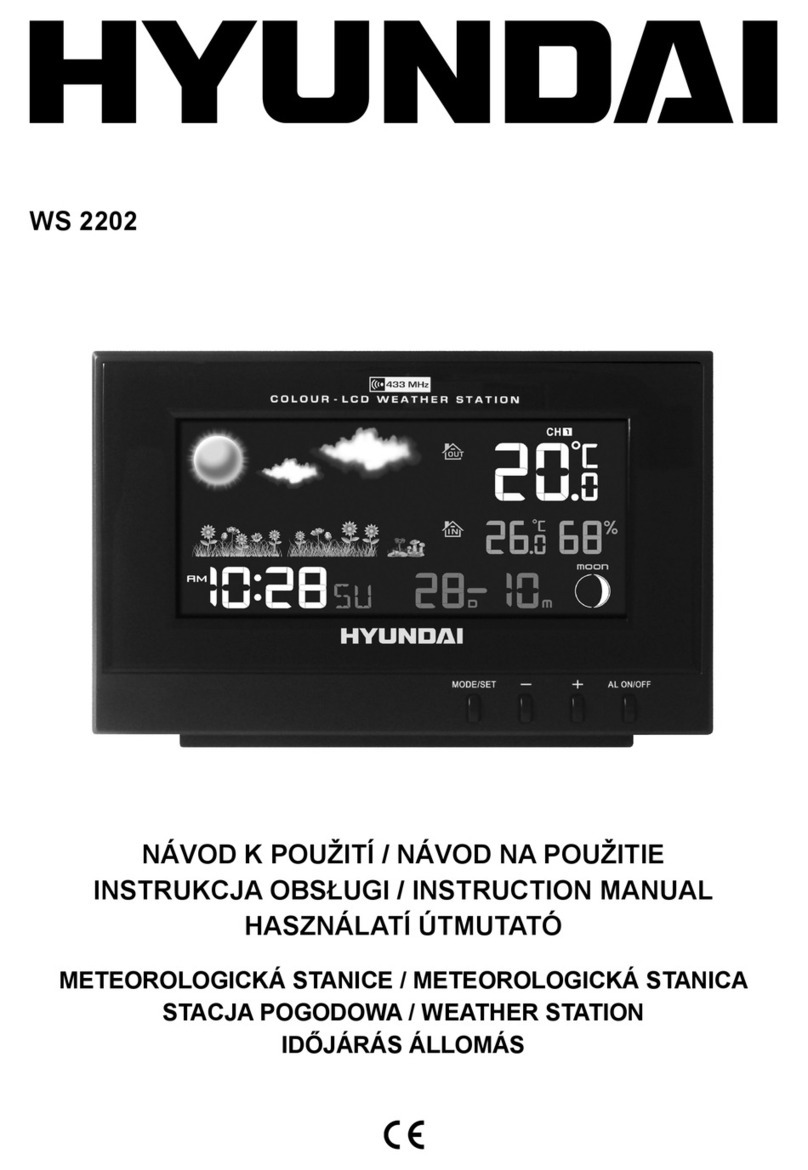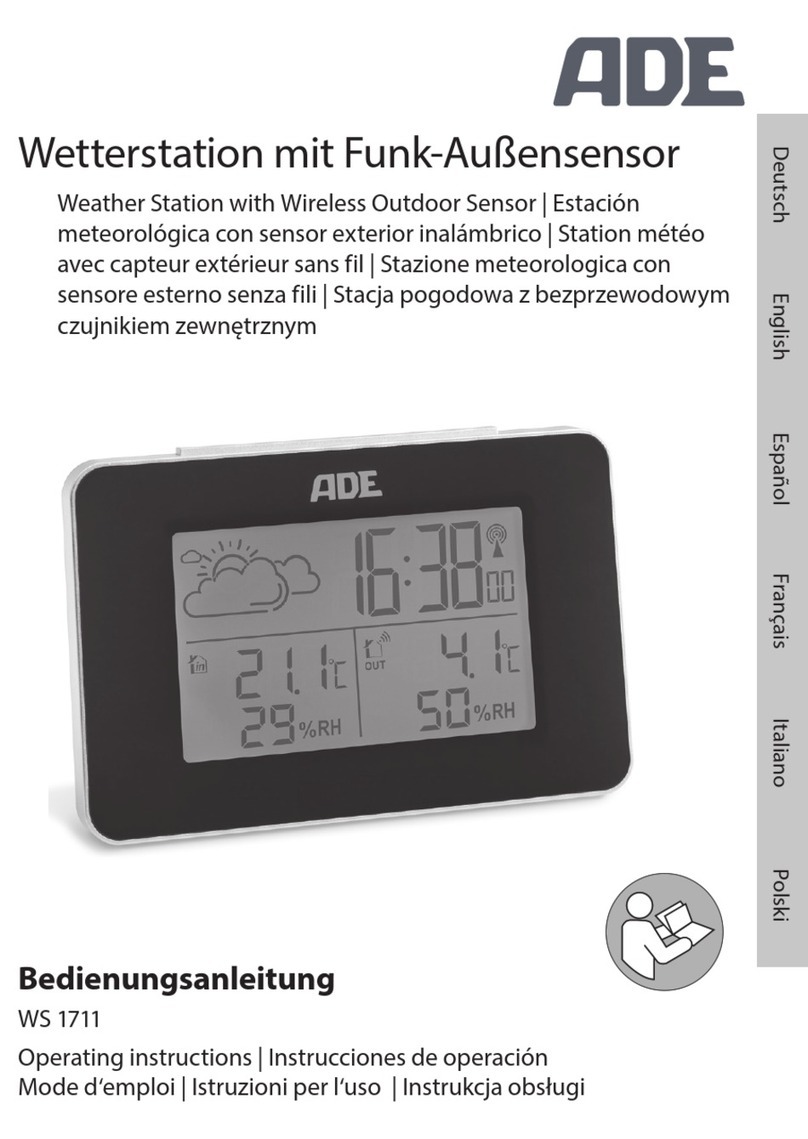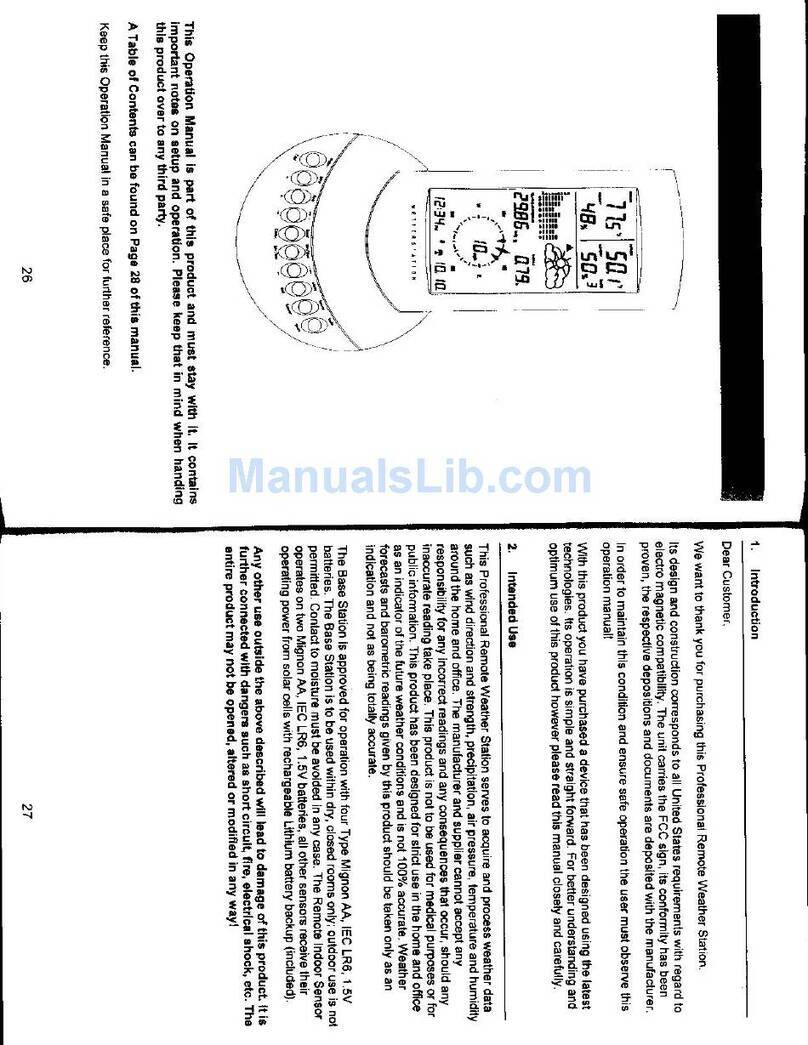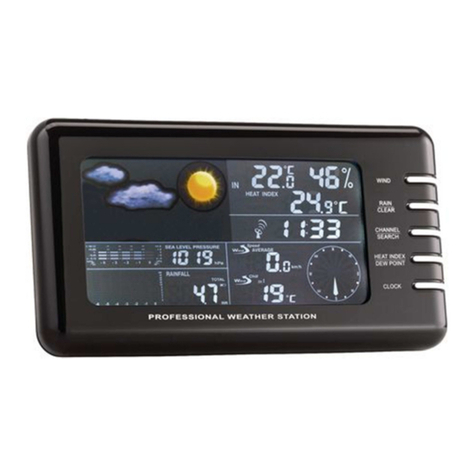
Weather Station - Model “PRO”
Weather Station - Model “PRO” Page ii Nov., 2001
GT27145B Cozz
Table of Contents - Cont’d.
Description Page
InstallationofLightningRod....19
PowerSupplyRechargeableBattery....19
ACExternalPowerWiring.....21
PowerSupplyOptionSolarPanel....22
8.0 InstallationofInstrumentation.....24
General.......24
SuppliedComponents.....24
InstallationofCross-ArmtoETEnclosure...24
Installation of 034A Wind Sensor ....26
Installation of Relative Humidity/Temperature
SensorandRadiationShield....28
Installation of Solar Radiation Pyranometer . . 29
SensorCableConnections.....30
Configure Sensor Switch Settings ....31
Upgrading a “JR” weather station to a “PRO” . . 31
SensorVerificationandClockSet....33
ShortHaulModemInstallation....33
TelephoneModemInstallation....35
9.0 Sealing&DesiccatingtheEnclosure....36
10.0 InstallationatCentralComputer....37
SuppliedComponents.....37
Installation.......37
ModelJR-PH~PhoneConnected....40
SuppliedComponents....40
Installation-General.....40
Standard Installation Method . . 40
11.0 Maintenance&Troubleshooting....42
GeneralMaintenance .....42
InstrumentationMaintenance....42
Batteries.......42
RechargeableBattery.....42
Desiccant.......42
SensorMaintenance......42
